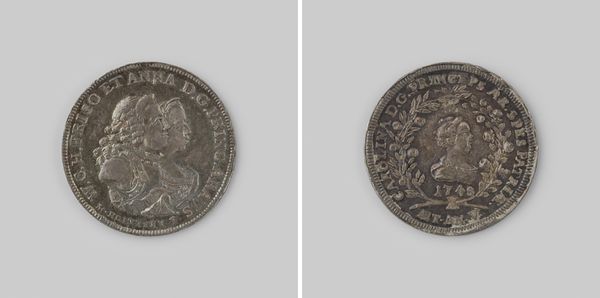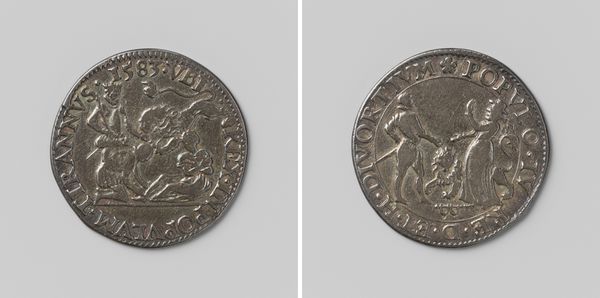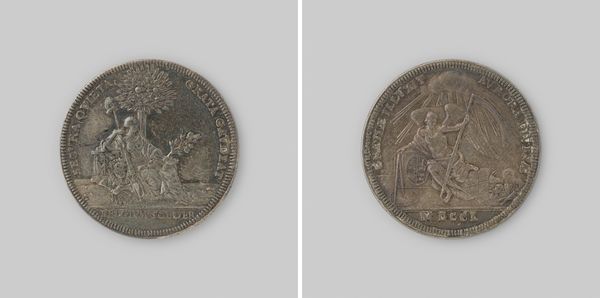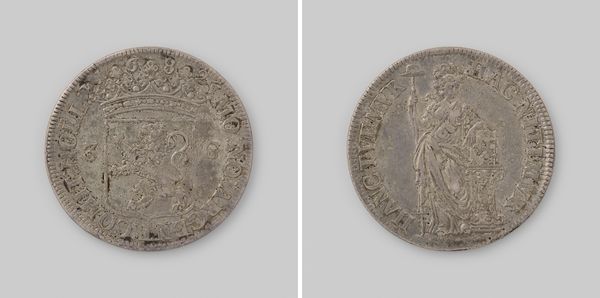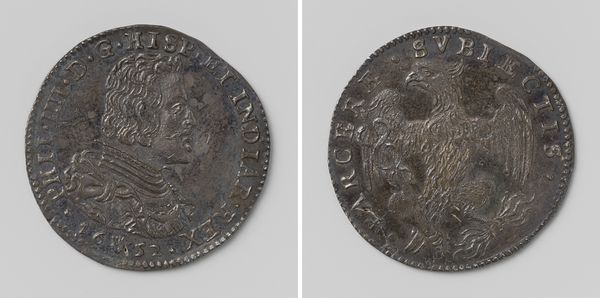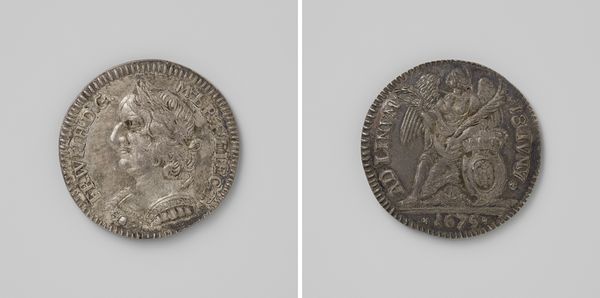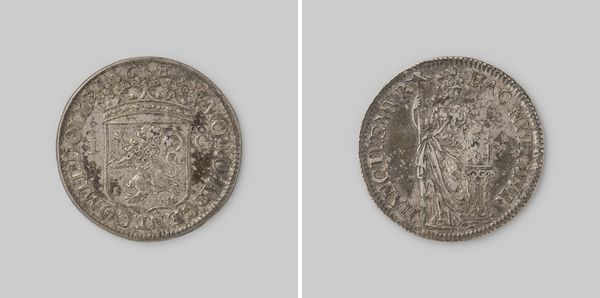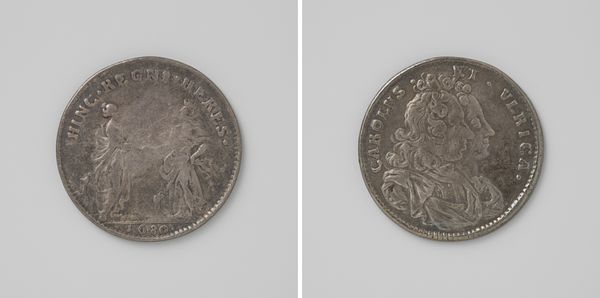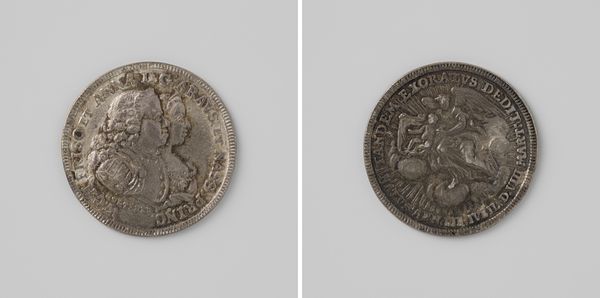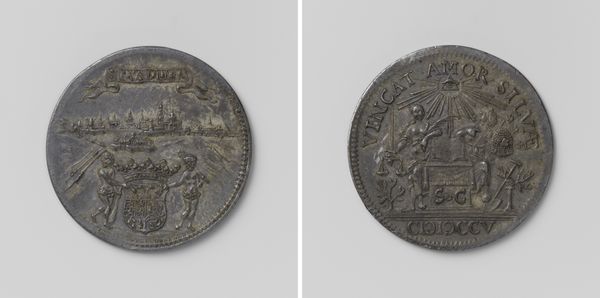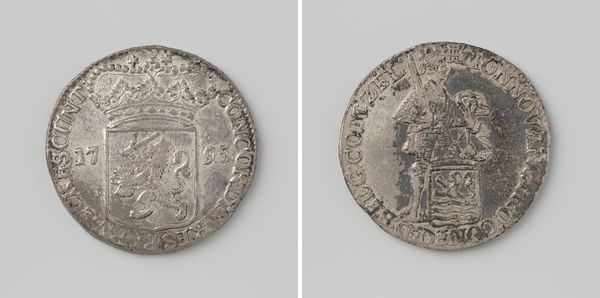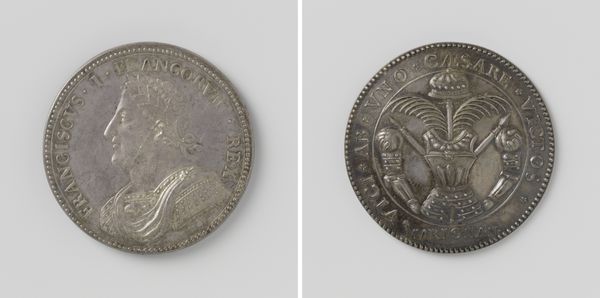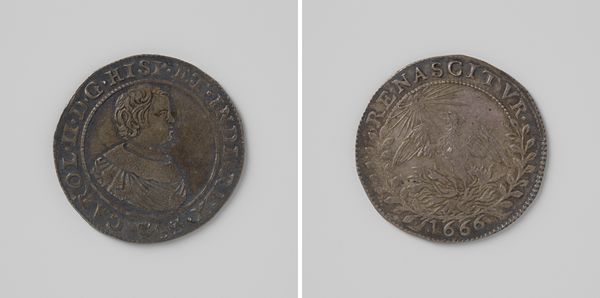
Dimensions: diameter 2.9 cm, weight 5.97 gr
Copyright: Rijks Museum: Open Domain
Editor: Here we have a silver print from 1583 called "Allegorie op de mislukte Franse aanslag op de stad Antwerpen", or "Allegory of the failed French attack on the city of Antwerp." It is quite small and at first glance feels very dense with information and detail. How do you interpret this work? Curator: This piece, beyond its depiction of a specific historical event, speaks volumes about the fraught political and religious landscape of the time. Antwerp, a major trading hub, was caught in the crosshairs of the Dutch Revolt against Spanish rule. What appears as mere "denseness" is a deliberate encoding of power dynamics. Notice how the 'failed French attack' is being framed. Whose perspective is being centered? Editor: I see what looks like a shepherd and flock of sheep on one side. Curator: Exactly! The "good shepherd" motif, common at the time, is employed here as a thinly veiled religious allegory. It connects to contemporary notions of leadership and community—and suggests the violence has spiritual dimensions. Who gets to define "good" and who is cast as the wolf threatening the flock? These questions of identity are crucial to understanding this artwork's message. Editor: That’s a very interesting take! So, you’re saying the artist used familiar religious symbols to make a statement about the political situation in Antwerp? Curator: Precisely. And by extension, to make a statement about power, about religious tensions, and about the shaping of historical narratives. The use of silver as the medium is also telling, it lends an air of importance while allowing for mass production, which would help spread this message widely. What does thinking about that kind of circulation suggest to you? Editor: It’s kind of like propaganda then? This image was created not just to show the event, but to persuade people about what it meant and who was to blame? Curator: Precisely. This piece allows us to reflect on the role of art as a potent tool for shaping public opinion and solidifying particular viewpoints during times of upheaval. It urges us to be critical of the narratives we are presented. Editor: Thank you. I didn't see all of those layers the first time.
Comments
No comments
Be the first to comment and join the conversation on the ultimate creative platform.
